
Andalusite is named for Arab Spain, although these days the most remarkable specimens may be found in Sri Lanka, Zimbabwe or Brazil.
This rare stone displays multiple colors at once, all in the autumnal spectrum: mossy greens, bourbon-chocolate browns, burnt orange, and burnished golden ambers. The crystals sometimes form a cross, and for this reason, Andalusite has been sought out as a talisman by Christian pilgrims for centuries.
It's a stone with a lot of personality, and a modern rebellious streak. Check out our selection today!
MULTI-SPLENDORED ANDALUSITE
Andalusite is a rare precious gem with a history of mistaken identity. It takes several forms, including one called Chiastolite, which forms a natural cross-pattern. This form has been collected for centuries as a magical talisman, long before the advent of Christianity. Many cultures attribute magical properties to the “four ways” represented in a cross-shape.
But why haven’t you heard of Andalusite, much less Chiastolite?
A gem-quality, transparent specimen of Andalusite is pleochroic, meaning that it displays several colors at once.
The color-play may remind you of a walk in the woods in New England in the fall. Burnt orange, deep gold, mossy green and flashes of red simultaneously flash through the gem as it is rotated.
And, less, glamorously, Andalusite can withstand extremes of temperature without changing its chemical structure. For this reason, some spark-plugs (!) are made with Andalusite. For the same reason, it’s also used in furnaces and kilns.
We’d rather see it in a fantastic ring on your finger…
Here are a few choice morsels currently available in our collection:
GIA Certified Natural Unheated Andalusite Orange Brown 8.19ct
Natural Rare Unheated Andalusite 3.24ct
What’s in a name?
The story of Andalusite starts off with a case of poor GPS.
“Andalusia” is not the source of this stone.
Andalusia is a Spanish-language alteration of the Arabic place-name, “al-Andalus”, meaning Muslim Iberia. The origin of this name is contested, but the region is the scorching-hot southernmost region of the Iberian peninsula, facing the Strait of Gibraltar.
The region known as Malaga and the ancient fortress-city of Granada (meaning “pomegranate,” a symbol of Arab or Moorish culture) are located in Andalusia, which is recognized as the traditional cultural center for majestic purebred horses, the historic flamenco dance form, and the world’s most thrilling bullfights.
It’s also associated with the poetic, nomadic, rebellious culture of the Rom or Romany people, formerly called gypsies.
All sounds pretty dramatic and romantic, right? Perhaps this is why in 1798, French mineralogist Jean-Claude Delametherie misnamed the stone—as a shrewd marketing move, to suggest the rustle of dancing skirts and the percussive patterns of castanets around smoldering campfires.
The fact is that the specimens he studied were actually from Castile-La Mancha or El Cardoso de la Sierra, a province of Guadalajara, both central regions located considerably north of the southern coast.
Today, exceptionally clear specimens of this unusual stone are often mined in Brazil. Other sources include many of the United States, South Africa, Australia, Madagascar, Russia, Zimbabwe and Sri Lanka.
The Collectible Cross
Andalusite is one of a small number of minerals that commonly forms prismatic crystals with a square cross-section.
This is known as the stone’s prismatic “habit.”
The name comes to us from the Greek “chiastos,” meaning to be arranged diagonally. The pattern of the carbon inclusions in the stone resembles the Greek character “chi”, which appears like a “X” or St. Andrew’s cross to Western eyes.
Chiastolite is a variety of Andalusite that contains black particles of graphite—the same thing that pencils are made with – that are arranged in geometric patterns.
This form of the stone is semi-opaque versus transparent, and is usually cut into a cabochon (rounded dome) versus a faceted cut.
The graphite is pushed aside by crystal particles within a rock that is undergoing extremes of pressure and heat.
As the rock grows, the particles form needle-like crystals that become concentrated at the points where the crystals meet, and sometimes a perfect cruciform (cross-shape) appears—just like magic!
Small wonder that by the 1500s and perhaps sooner, pilgrims travelling across Spain to visit the holy relics of St. James at the reliquary of Santiago de Compostela purchased pieces of locally mined Chiastolite displaying the cross-formation as a religious souvenir.
The inclusions make Chiastolite softer and less tough than transparent Andalusite, which generally tests at 6.5 – 7 on the Mohs hardness scale.
In addition to the stunning cross-form, other types of Andalusite may contain other kinds of inclusions, including flakes of Hematite or “Fool’s Gold” in some Brazilian specimens.
Color-Play
It’s a common mistake to compare Andalusite to Alexandrite, another of our favorites.
But here’s the difference: Alexandrite is a color-changing gem, meaning that you have to see the stone in various kinds of light to witness the red-to-green transformation.
Andalusite displays all of its two, three or more colors at the same time, under the same light source.
Green specimens of Andalusite are classified as Viridine, referencing the color, which is often a warm, earthy, mossy-to-olive shade. Some Viridrine crystals from Brazil show a brighter lime green suggesting a tart tropical citrus drink!
Blue Andalusite specimens have been collected in Ottre, Belgium.
The cut will affect how this stone shows it (many) true colors.
Long shapes, like oval, marquise and emerald cut, tend to show one color toward the center and a second, usually darker color, near the ends.
Square and round cuts usually blend the colors into a mosaic effect.
Andalusite has a uniquely modern appeal.
While the more traditional precious gems – Diamond, Emerald, Ruby and Sapphire – are historically prized for consistency of color and super-clarity, Andalusite does seem to have its own rebellious streak by breaking all these rules.
Feeling a bit rebellious yourself this fall season?
Call us to talk about finding this rare stone that expresses your free spirit as the autumn leaves turn to amber, gold and orange.

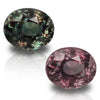 Alexandrite
Alexandrite Amethyst
Amethyst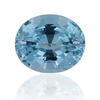 Aquamarine
Aquamarine Chrysoberyl
Chrysoberyl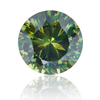 Demantoid
Demantoid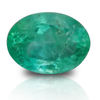 Emerald
Emerald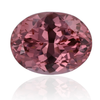 Garnet
Garnet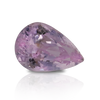 Kunzite
Kunzite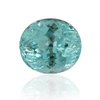 Paraiba
Paraiba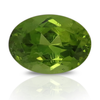 Peridot
Peridot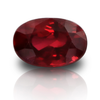 Ruby
Ruby Sapphire
Sapphire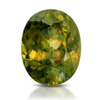 Sphene
Sphene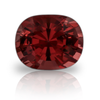 Spinel
Spinel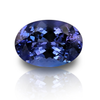 Tanzanite
Tanzanite Topaz
Topaz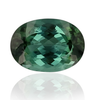 Tourmaline
Tourmaline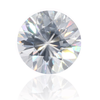 Zircon
Zircon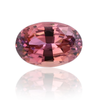 Zoisite
Zoisite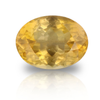 Rare Gemstones
Rare Gemstones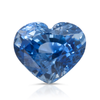 Heart Shape
Heart Shape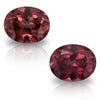 Matched Duo
Matched Duo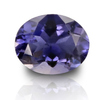 Everyday Candy
Everyday Candy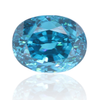 Insta Therapy
Insta Therapy Mini-Splurge
Mini-Splurge